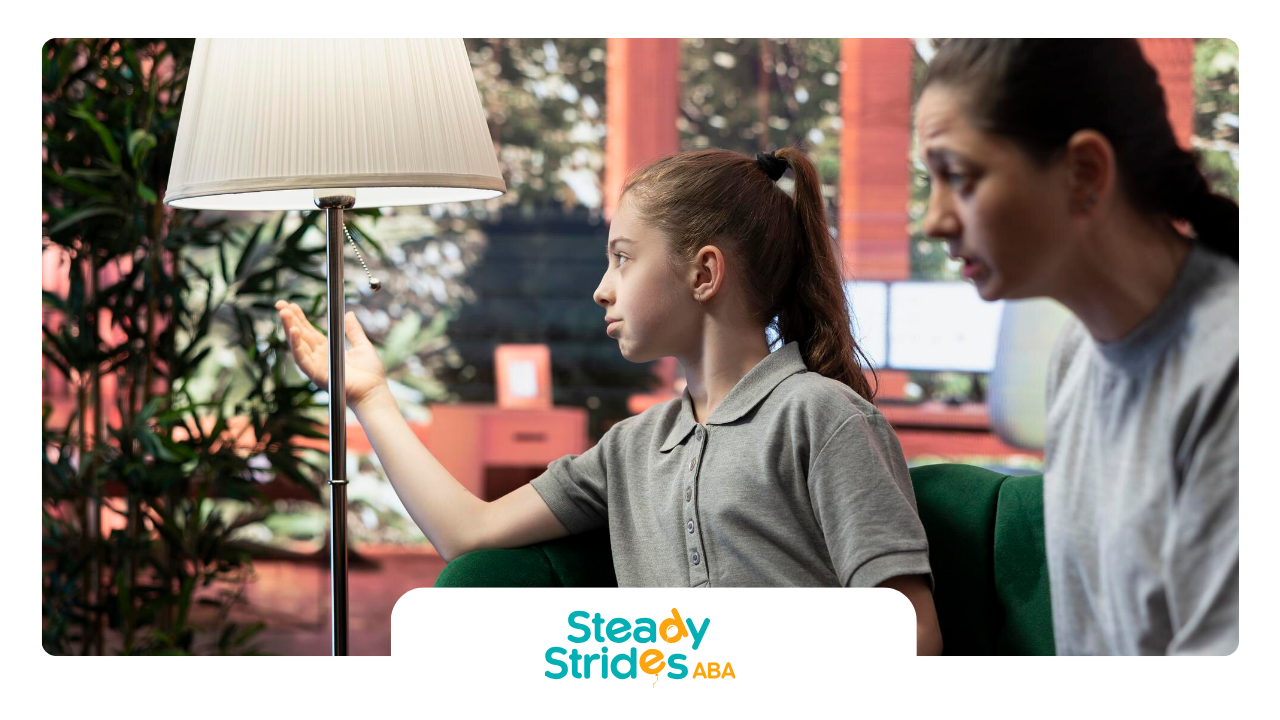An autism spectrum disorder (ASD) diagnosis usually includes communication challenges. For people with autism who struggle with verbal communication, augmentative and alternative communication (AAC) devices can be a valuable tool for an autistic child. These devices help to fill communication gaps. They allow individuals across the autism spectrum to express themselves better and interact with others.
Exploring AAC Devices for Autism Spectrum Disorder
Communication is very important for how we interact with each other. However, it can be hard for people on the autism spectrum. Normal verbal communication is not always easy for them. This can cause frustration, feelings of being alone, and behavior problems.
Luckily, AAC devices have come forward as helpful tools. They provide a way for individuals with autism to share what they need, think, and feel. These devices vary widely. Some are simple, like visual aids and picture cards. Others are advanced, like speech-generating devices.
The Fundamentals of AAC Technology
Alternative communication methods, known as AAC, help people who have trouble speaking. An AAC system gives them a way to share their thoughts, needs, and wants without just talking.
AAC technology includes many tools and ways to communicate, including any type of communication that is simple like gestures, sign language, or using pictures and symbols. These easy options help those with limited language skills share their basic needs. Some AAC systems are more advanced and use electronic devices that can speak for the user. People can choose ready-made phrases or write messages, which are then spoken out loud.
One of the best things about AAC technology is that it can change to fit what each person needs. This helps them communicate in a way that is easy and effective for them. AAC systems create a way for people to express themselves. This can lead to more independence, social connections, and overall well-being.
How AAC Devices Empower Individuals with Autism
For people on the autism spectrum, AAC devices are more than just tools for communication. They help give a voice to those who find it hard to speak. These devices help break barriers and create real connections.
AAC devices improve communication skills and support language development for individuals with autism. They show a visual way to understand language, helping users see how words fit together. This can really help those who learn better through visuals, allowing them to gain language and communication skills more easily.
Moreover, AAC devices can be adjusted to fit the unique needs of each person. Whether it is a simple picture exchange system or a high-tech device that speaks, understanding the different types of AAC devices available allows individuals to see how AAC technology can be customized. This ensures the device matches a person's cognitive abilities, motor skills, and how they like to communicate. With this personal touch, an AAC system can really help improve a person's communication journey.
Selecting the Right AAC Device for Autism
Choosing the right AAC device is an important choice that can greatly affect how someone communicates. There are many options to choose from, so it's essential to think about different factors carefully.
Working with a qualified speech-language pathologist is very important during this process. These experts can evaluate a person's communication needs, thinking skills, and physical abilities. They can then suggest the best AAC device for that individual.
The world of AAC has many different devices. Each device has its strengths and weaknesses. Knowing the types of AAC devices is important when picking the right one for a person's needs. There are two main types of AAC devices: unaided and aided communication.
Unaided communication uses a person's body and does not need extra tools. This can include:
- Gestures: Hand movements or body language to express meaning.
- Sign language: A system using hand shapes and movements to communicate.
- Facial expressions: Showing feelings and responses through facial cues.
Aided communication uses tools or devices. This type includes a variety of options:
- Low-tech AAC devices: Simple tools like picture cards, communication boards, and visual schedules.
- Mid-tech AAC devices: Devices that can speak and have basic programming, like single-message buttons or pre-recorded phrases.
- High-tech AAC devices: Advanced electronic devices similar to tablets. They have dynamic displays, large vocabulary options, and customizable features. Many AAC apps are on these high-tech devices, allowing for flexibility and many customization choices.
Customizing AAC Devices to Fit Individual Needs
One size does not fit all when it comes to AAC. To make AAC work well, we need to personalize the system for each person. This means matching their strengths, preferences, and communication goals. Using this personal approach can help unlock the full power of AAC.
When we customize an AAC system, there are many factors to think about, including different levels of complexity. We need to consider the person’s cognitive abilities, language skills, and motor skills. These factors help us decide the best type and complexity of the AAC device. For example, a picture exchange communication system (PECS) might be a good start for someone with limited language skills. On the other hand, a high-tech device with a rich vocabulary might suit someone with stronger language abilities.
Additionally, we should also consider the person's interests and communication style. By adding familiar images, symbols, or personal photos to the AAC system, we can make it more engaging. This helps motivate the user. The aim is to make the AAC system feel like a natural part of their life. This way, it can help support easy and natural communication every day.
Implementing AAC Devices in Daily Life
Transitioning from picking an AAC device to using it well in daily life takes careful planning and support. The main goal is to build a space where communication is rich. This way, people feel encouraged to use their AAC system often and meaningfully.
To implement AAC successfully, it's important to include it in different places and daily routines. For example, keep the AAC device close during meals, playtime, and bedtime. This gives people many chances to practice using their AAC system in simple, everyday situations.
Strategies for Successful AAC Integration
Successful use of AAC is more than just having a device. It needs a real effort to build a friendly communication space. Encouraging daily use of AAC devices is key. This practice helps people feel more confident and better at their communication skills.
Also, using AAC in daily talks helps with language acquisition. Like how children learn by hearing and talking, those who use AAC learn better when they frequently hear and see language through their chosen device. This regular exposure builds vocabulary, improves sentences, and makes overall communication skills stronger.
Facing communication difficulties directly is important for a good AAC experience. Patience and understanding are needed when helping someone learn to communicate with AAC. Celebrating small wins, giving praise, and creating a sense of success can really help boost a person’s motivation and progress.
Overcoming Common Challenges with AAC Use
AAC devices are very helpful for communication. But, there can be some challenges that people face. By tackling these issues early, we can help make the AAC experience better and more successful.
One common challenge is the reluctance to use the AAC device. This resistance can come from different reasons. Some people might feel unsure about using technology. Others may prefer using gestures because they are used to them.
Additionally, some might worry about what others think. To help with this, it’s good to use a friendly and patient approach. Gradually introducing the AAC device during fun activities and highlighting its advantages can make it easier for them to accept it.
Also, there are times when the people they talk to may not know how to use AAC. This lack of knowledge can cause misunderstandings. To avoid this, it's important to educate family, teachers, and friends about AAC. This will create a supportive space, helping those who use AAC feel accepted and understood.
The Impact of AAC Devices on Communication and Behavior
The use of AAC can change lives in many ways, not just by helping with communication. When people can share their thoughts clearly, they feel less frustrated and gain more control over their lives.
Also, as their communication skills improve with AAC, people find it easier to connect and be included in social situations. This ability to talk and share feelings leads to better conversations. It greatly affects their happiness and well-being.
Enhancing Communication Abilities with AAC
One of the biggest advantages of AAC is that it helps people improve their communication skills. AAC gives users a way to express their thoughts and needs, even if they can't speak at all or only have limited verbal communication.
AAC devices also help to build receptive language skills. Receptive language is all about understanding what others say. With pictures, symbols, and spoken words, AAC devices provide visual and auditory help. This helps people connect language to its meaning, making it easier for them to understand and respond to others.
While AAC mainly acts as an alternative communication method, it can also help some people develop their verbal speech. The pictures and sounds from AAC devices can motivate them to make vocal sounds and try to speak. For some, AAC can help them move toward verbal communication, giving them the skills and confidence they need to eventually use spoken words.
Behavioral Improvements Linked to Effective AAC Use
Effective AAC use often leads to great improvements in behavior. This shows how much it helps a person’s well-being. Many times, issues like frustration, anxiety, and difficult behaviors come from not being able to communicate well. AAC gives people a dependable way to express what they need. This helps cut down frustration and supports better emotional control.
When people feel heard and understood, they are likely to behave better. Better communication leads to better social interactions. AAC helps in social settings. It allows individuals to start conversations, share things they like, and take part in activities with others.
Also, AAC can lower the chances of difficult behaviors by solving the main issue: the communication gap. When people can easily share their wants, needs, and feelings, there’s less reason for difficult behaviors. AAC helps individuals control their surroundings, make choices, ask for things, and connect positively with others.
Collaborating with Professionals for AAC Success
Successful AAC implementation requires teamwork. It involves people using AAC, their families, and professionals working together. Speech-language pathologists are very important in this process. They give expert advice and help. They also do detailed assessments to find the right AAC options and create communication plans for each person.
Educators are essential too. They help include AAC in schools. They work with families and therapists to support AAC use in classrooms. This helps create inclusive learning experiences for students who use AAC.
Role of Speech-Language Pathologists in AAC Training
Speech-language pathologists (SLPs) are key members of the AAC team. They help individuals and their families use AAC successfully. SLPs have a lot of knowledge and experience. They make sure the AAC system fits the person’s needs and goals.
In speech therapy sessions, they focus on expanding vocabulary, improving sentence structure, and developing ways to communicate with the AAC system. SLPs give support and help solve any problems. They can adjust the AAC system when needed. Occupational therapists may also help, especially if the person has fine motor difficulties.
Outside of therapy sessions, SLPs work closely with families and teachers. They provide training and resources to help use AAC at home and in school. This helps create a consistent and supportive environment for communication in different places.
Working with Educators to Support AAC in Schools
Integrating AAC into schools is very important for students who need these tools to talk and learn. Teachers have a key role in creating a classroom that is welcoming and helps students using AAC do well both in class and with friends.
Working together with the student's family and speech-language pathologist is very important. Good communication helps meet the student’s AAC needs in different places. It’s also important to incorporate occupational therapy when teaching classmates about AAC. This way, they can support and understand their peers better. By building a classroom that celebrates diversity and values all ways of talking, teachers help include everyone.
AAC in schools is not just about schoolwork; it also includes friendships, after-school activities, and events. By making sure that students using AAC can talk and join in on everything at school, we help them feel they belong. This encourages them to reach their full potential.
Advancements in AAC Technology
AAC technology is always changing. It aims to help people who have complex communication needs. These changes create new chances, make it easier to use devices, and allow more people to access AAC.
AAC includes simple tools like visual aids and picture cards. It also has advanced devices that can generate speech and use eye tracking. This way, AAC helps remove communication barriers and opens up new ways for people to express themselves.
The Evolution of AAC Devices Over Time
The evolution of AAC technology reflects a remarkable journey of innovation and progress. Understanding the history of AAC devices provides valuable insights into the transformative power of assistive technology in enriching lives.
Early forms of AAC were often low-tech and limited in scope. Over time, advancements in technology led to the development of electronic communication aids. The introduction of speech-generating devices marked a significant milestone, giving a voice to individuals who were previously unable to communicate verbally.
Here's a glimpse into the evolution of AAC:
| Era | Advancements |
|---|---|
| Early Years (before the 1950s) | Primarily non-electronic aids, such as picture boards, sign language, and alphabet boards. |
| Mid-20th Century (1950s-1980s) | Introduction of early electronic communication aids with limited vocabulary and functionality. |
| Late 20th Century (1980s-2000s) | Emergence of more sophisticated speech-generating devices (SGDs) with larger vocabularies and customizable features. |
| 21st Century (2000s-Present) | Rapid advancements in technology, including touchscreens, eye-tracking, and mobile applications, leading to more intuitive, portable, and feature-rich AAC options. |
Future Trends in AAC Technology and Autism Support
The future of AAC looks very bright. It is full of exciting possibilities. This is thanks to new technology and a better understanding of autism and communication needs. As technology gets better, we can expect AAC solutions that are easier to use and more personal.
One area with a lot of promise is artificial intelligence (AI). AI can help AAC systems learn how a person communicates. It can understand their preferences and suggest words they might want to use. This personal touch can make communication faster and more fluid.
Also, combining AAC with other helpful technologies, like smart home devices and wearable sensors, is very promising. Imagine a world where a person's AAC system works well with their home environment. They could control appliances, find information, and interact with their surroundings more on their own.
Conclusion
AAC devices are very important for helping people with autism communicate better. By tailoring these devices to match individual needs and using them in daily routines, we can see big improvements in how they communicate and behave.
Empowering Your Autistic Family with AAC Devices.
Working together with professionals like speech-language pathologists and teachers is really important for using AAC successfully. As AAC technology keeps improving, there are many hopeful changes ahead to help those on the autism spectrum. Knowing how AAC devices affect communication and behavior is vital to making life better for individuals with autism.
At Steady Strides, our expert is dedicated to providing compassionate and effective support for individuals with autism and their families. Contact us today to learn more about how we can help you navigate the complexities of the autism spectrum and embark on a journey towards growth and success.
FAQs
What Age Should AAC Devices Be Introduced to Children with Autism?
Early help is very important for language skills and communication development in children with autism. AAC devices can be used right away, even before we notice major delays in spoken language.
Can AAC Devices Be Used at Home and in School Environments?
For successful AAC use, it is important to use the device regularly in different places. Encourage caregivers to use it at home. Also, work together with teachers to make sure AAC fits well into the school setting.
How Do I Choose the Most Suitable AAC Device for My Child?
Choosing an AAC device needs careful thought. Talk to a skilled speech-language pathologist. They can check your child's skills, communication needs, and what they prefer.
Are There Funding Options Available for AAC Devices?
- It is important to look for ways to fund AAC devices because they can be expensive.
- Make sure to check with your insurance provider to see if they cover AAC devices.
- You should also look into grants, subsidies, and financial assistance programs that could help you.












